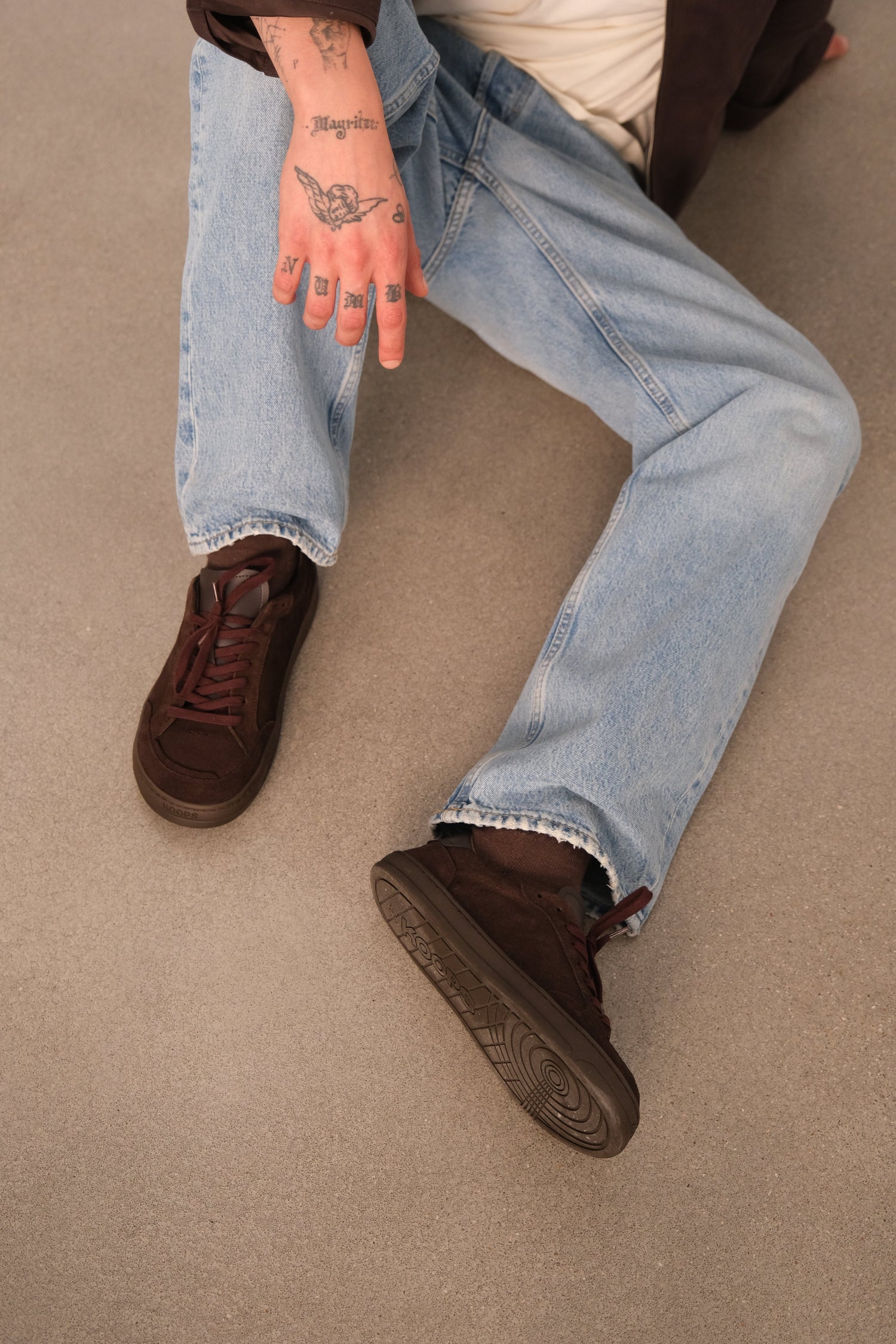Foot Cramps
Waking up at night with a sudden, sharp cramp in your foot or feeling your muscles tighten while walking can be more than just annoying — it’s your body sending a signal. Understanding what causes foot cramps and how your footwear (yes, even your shoes!) can make a difference is key to long-term comfort and foot health. Let’s break down the most common triggers and explore whether barefoot shoes can actually help.
Most Common Causes: Circulation, Tension, and Mineral Deficiency
Foot cramps often occur when something disrupts normal muscle function — usually linked to poor circulation, excessive tension, or nutritional imbalance.
- Poor circulation: Tight footwear or prolonged sitting can reduce blood flow to the feet, making muscles more prone to sudden contractions.
- Muscle tension: Overuse, standing for long periods, or intense exercise without stretching can cause micro-fatigue in small foot muscles.
- Lack of minerals: Low levels of magnesium, potassium, or calcium may affect how nerves and muscles communicate, triggering cramps more easily.
Dehydration can also amplify these effects — a simple reminder to keep your water intake consistent throughout the day.
Nighttime vs. Walking Cramps: What’s the Difference?
Nighttime cramps usually appear suddenly while resting, especially in the arch or toes. These are often linked to mineral imbalance or dehydration.
Walking cramps, on the other hand, tend to arise from overuse, restricted footwear, or circulation issues. They might fade when you stop moving — a clue that blood flow or muscle fatigue could be involved.
How Footwear Influences Foot Cramps
Your shoes can play a surprisingly large role in either causing or preventing cramps. Conventional shoes often have narrow toe boxes and raised heels that restrict natural movement and reduce circulation.

When your toes can’t spread and grip properly, the smaller stabilizing muscles of the foot weaken over time — making cramps and fatigue more frequent.
Switching to barefoot or minimalist footwear encourages your feet to move and strengthen naturally, which can improve blood flow and muscle endurance.
The Connection Between Stress, Rest, and Muscle Contractions
Stress affects your entire body, including your feet. When the nervous system is overstimulated, muscles may stay slightly contracted even at rest. Combine this with poor sleep or high cortisol levels, and nighttime cramps become more likely.
Simple habits like stretching before bed, gentle foot massages, or mindfulness breathing can reduce muscle tension and improve overall relaxation.
Natural Ways to Relieve Foot Cramps
- Hydrate daily: Aim for consistent water intake throughout the day, especially in hot climates or after exercise.
- Stretch regularly: Focus on calves, arches, and toes to maintain flexibility.
- Boost minerals naturally: Eat magnesium-rich foods like leafy greens, nuts, and seeds.
- Massage and mobility: Use a tennis ball or massage roller under your feet to release tension and stimulate circulation.
- Walk barefoot: Gentle barefoot walking on grass or sand can strengthen muscles and restore natural mobility.
Can Barefoot Shoes Help Prevent Foot Cramps?
Yes — when used correctly. Barefoot shoes promote natural alignment, balance, and blood flow by allowing your feet to move freely. Their wide toe boxes encourage proper toe splay, while thin, flexible soles stimulate the muscles that traditional footwear often weakens.
However, transitioning should be gradual. Start with short walks or daily wear for 1–2 hours, increasing time as your feet adapt. This helps your muscles grow stronger without overstraining them.
Explore our men’s barefoot shoes collection — designed to strengthen, not restrict, your natural movement.

When to See a Specialist
If cramps become frequent, severe, or accompanied by numbness, swelling, or weakness, consult a podiatrist or physiotherapist. Chronic foot cramps can sometimes indicate underlying conditions such as circulation issues, nerve compression, or electrolyte imbalance.
Bottom line: Foot cramps are your body’s way of asking for better balance — in movement, nutrition, and rest. Switching to barefoot footwear, staying hydrated, and giving your feet the freedom they deserve can make all the difference.






